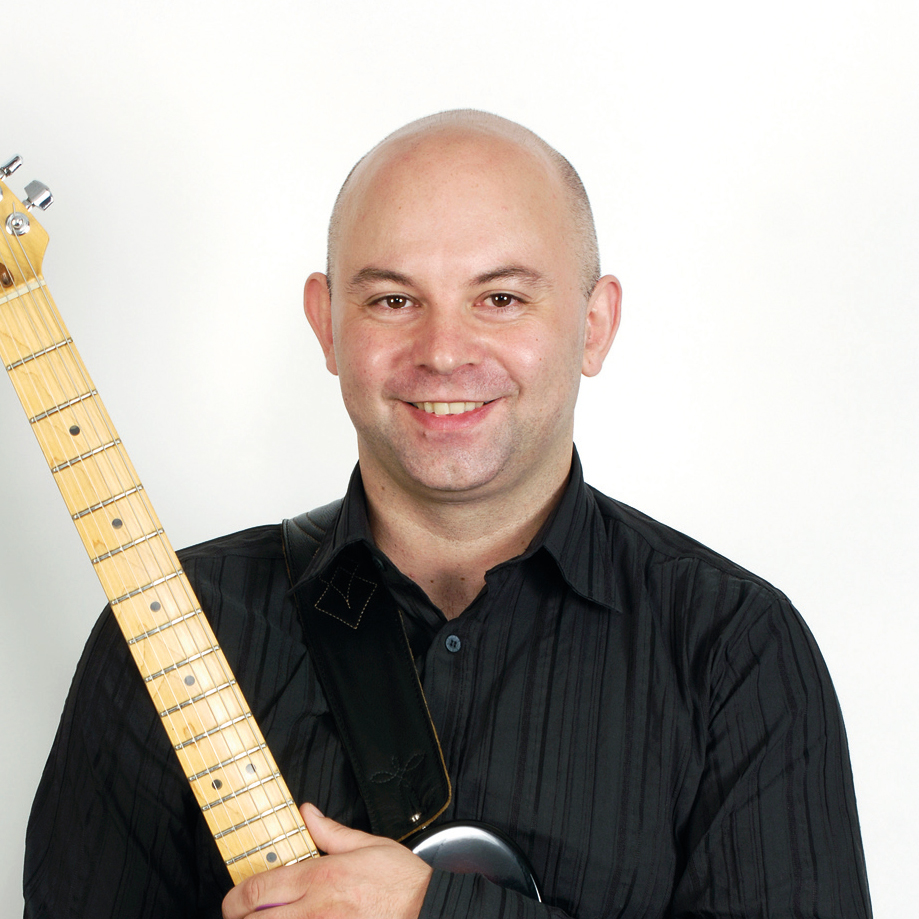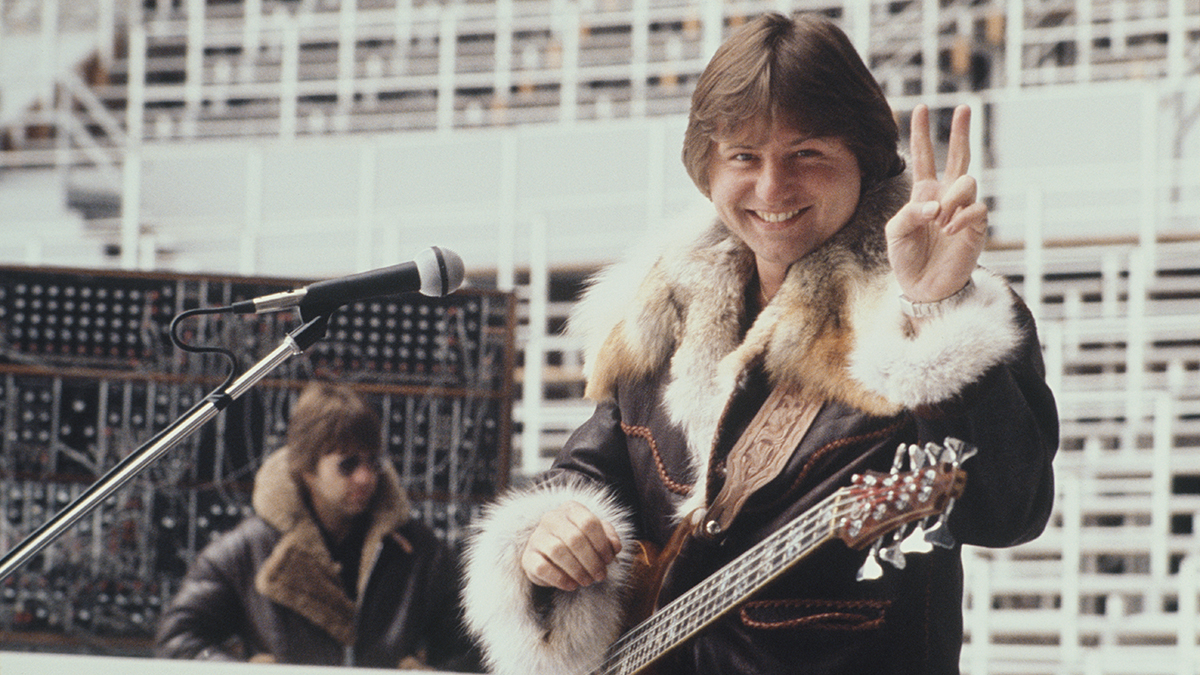Blues-rock legend Michael Landau has made harmonic changes his calling card – and this lesson in his sophisticated soloing style demonstrates how you can, too
Landau’s articulate playing and reference-quality tone makes him one of guitar’s unsung GOATs

The chances are that you have definitely heard Michael Landau. For a little over 40 years Landau has been a first-call session guitarist, appearing on literally hundreds, maybe even thousands, of records.
If your preconception of a session player is of some sterile six-string android that churns out note-perfect but soulless and clinical performances at the drop of a hat, then it’s time to think again.
Landau’s playing is dripping with feel, emotion, dynamics, and musicality. He has graced the stage with some of the most important contemporary artists in the history of popular music (Cher to Richard Marx, Chaka Khan to Rod Stewart and Whitney Houston to Seal) including regular and extended stints with Joni Mitchell, Boz Scaggs, James Taylor, and countless others. All for good reason, too.
Alongside his session credits, Landau has produced a healthy body of work as a band member and leader, having been involved in numerous collaborative projects with such heavyweights as Robben Ford, Vinnie Colaiuta, Russ Ferante, and Scott Kinsey.
As if this were not enough, we also need to take into account his many studio releases and live work as a solo artist.
Landau’s style has its roots in blues and classic rock. He has a superb sense of rhythm, a bold and dynamic delivery, he is articulate, technically and harmonically sophisticated, and he has a tone to die for.
He’s also stylistically very broad, as you’d expect with a player with such a diverse resume and wealth of musical experience. He’s comfortable playing over odd-time signatures, Latin feels, straight grooves, classic blues, rock, roasting-tempo bebop and pretty much anything else you can throw at him.
All the latest guitar news, interviews, lessons, reviews, deals and more, direct to your inbox!
At all times he still manages to sound like himself, as he tackles these differing musical situations on his own terms, rather than relying upon musical clichés dictated by any particular genre.
There’s also a sense of what George Benson calls ‘reckless abandon’ about his playing. To put you in the general ballpark area, imagine if Jimi Hendrix had lived and spent a few years playing with fusion legend Joe Zawinul from Weather Report, with phenomenal classic rock and blues vocabulary, delivery and tone, but with the intelligence and facility to articulate sophisticated changes, complex time feels and involved rhythmic syncopations.
The musical examples that follow are divided into four cohesive mini solos, each one highlighting an aspect of Landau’s improvisational vocabulary.
We begin with some classic blues and rock phrasing, articulating changes with mixed rhythmic phrasing and anticipation. Next we move onto some fast and connected blues flurries, although this time we’re staying in a fixed tonality.
The final two mini solos explore Landau’s expressive side, with a cleaner tone and less emphasis on bold delivery and attack and more attention placed on note selection, scale choice, harmonic articulation and sophistication.
As always, we’d suggest you learn these examples as written and then use the concepts, techniques and approaches as the inspiration behind your own explorations into similar areas.
Technique Focus: Making the changes
The idea that it’s only jazz musicians that articulate harmonic changes is something of a myth. Although, due to the twists and turns in tonalities and the multiple modulations present in much of the repertoire, shifting note selection to remain in sync with the underlying chords is something of a necessity in jazz.
Landau is a member of this elite group that can balance a sense of energy and attack with controlled intelligence in relation to harmonic articulation.
However, not exclusively. Many of Joe Satriani’s romping surf-rock masterpieces move through any number of key centres during the solos, and take a listen to Larry Carlton’s legendary solo on Steely Dan’s Kid Charlemagne.
Almost every Van Halen solo changes key at least once and blues-rock maestros ranging from Eric Clapton and Peter Green to Robben Ford and Eric Johnson all adjust their note selection to align with the harmony.
Landau is a member of this elite group that can balance a sense of energy and attack with controlled intelligence in relation to harmonic articulation.
One simple but effective strategy you could adopt to begin developing this liberating component to your playing, might be to practice specific ideas in all 12 keys and with the minimum of fretboard movement possible, targetting the key notes in each chord as it comes. The subsequent musical benefits and the facilities they present would definitely be worth the effort.
Get the tone
Amp Settings: Gain 4, Bass 4, Middle 5, Treble 6, Reverb 4
Landau is most associated with Fender Stratocasters, although he’s been augmenting these with humbucking pickups. It’s traditional blues and classic rock all the way, so aim for a slightly crunchy Fender amp tone and add a drive pedal or two set to moderate gain but stacked in series to achieve an adjustable level of saturation. Just add reverb and delay.
Example 1. Classic rock through changes
We begin by showcasing Landau's fluency with rock phrasing against C and D Minor tonalities. Look out for the anticipation in bar 4, a good three beats before the chord changes.
Other points of interest are the mix of rhythmic groupings, switching from triplets to 16ths, with some neat syncopations. Much of the vocabulary is derived from the Minor Pentatonic (R-b3-4-5-b7), but the beauty is in the phrasing, the note selection, and the articulate and convincing delivery.
Example 2. Fast connected blues flurries
We shift to G Minor for a more overdriven blues-rock inspired solo. Turn your volume down for the opening phrases, reducing the gain a little to give you the scope to follow the dynamic lift in bar 9.
Again, much of the melodic material here is derived from the G Minor Pentatonic (G-Bb-C-D-F) and G Blues scale (added Db), along with the occasional added 9th (A).
I’d suggest working closely with the audio to make sure the rhythms are all in place, as there are some tricky streams of 16th notes and some syncopated lines to get your fingers around. Once again, intensity and intent are the order of the day.
Example 3. Expressive melodic playing over changes
This solo showcases Michael’s lyrical mode with a half-time vamp that moves through four different tonalities.
Check out the country inspired open-string cascade in the opening bars, using D Mixolydian with as many ringing open notes as possible, juxtaposed against sustained fretted notes.
In bar 3 we’re using Bb Lydian b7 (Bb-C-D-E-F-G-Ab), the fourth mode from F Melodic Minor. This leads us onto a jazzy chromatically decorated idea derived from Eb Mixolydian (Eb-F-G-Ab-Bb-C-Db), before rounding things off with a motivic sequence taken from the Ab Whole-Tone scale against Ab7 (R-2-3-#4-#5-b7).
Example 4. Mixolydian to Mixolydian b6
We conclude this look at Landau’s playing, this time showcasing his ability to create organic sounding lines from sophisticated harmonic information without ever sounding mechanical, contrived or overly premeditated.
Here we’re alternating between C Mixolydian (C-D-E-F-G-A-Bb) and C Mixolydian b6 (C-D-E-F-G-Ab-Bb), the fifth mode of G Melodic Minor.
Take the time to figure out the notes in each of the underlying chords and this will explain how the melody and harmony aligns perfectly. Again, we see mixed rhythmic groupings, along with an expert integration of single-note lines and double-stops.
John is Head of Guitar at BIMM London and a visiting lecturer for the University of West London (London College of Music) and Chester University. He's performed with artists including Billy Cobham (Miles Davis), John Williams, Frank Gambale (Chick Corea) and Carl Verheyen (Supertramp), and toured the world with John Jorgenson and Carl Palmer.




